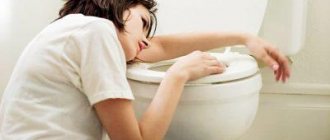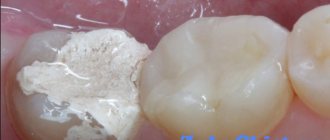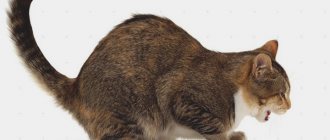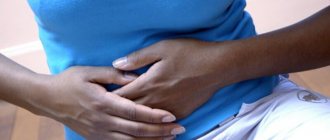Young children are most susceptible to rotavirus when they are less than 10 years old. Vomiting due to an intestinal infection is fraught with dehydration of the small organism, as well as other serious complications. Therefore, every parent should know what actions need to be taken to provide first aid.
Before stopping vomiting due to rotavirus in a child at home, you should make sure that the condition is not critical and does not pose a threat to health. Also, experts do not recommend giving any medications until the child is examined by a pediatrician.
General characteristics of rotavirus infection
Rotavirus infection, also called rotavirus gastroenteritis, is an acute disease. Its causative agents are several types of rotaviruses. Once in the gastrointestinal tract of a person with a weakened or immature immune system (children aged 6 months to 6 years, as well as the elderly, are primarily at risk), rotavirus disrupts healthy digestion and leads to vomiting, diarrhea (frequent loose stools) and other symptoms , which will be discussed below.
The disease develops in three stages:
- The incubation period, which can last from 1 to 5 days.
- An acute period of illness, usually lasting up to 7 days (however, in severe cases it can last longer).
- Recovery stage (on average 4-5 days). At this time, the child can remain a carrier of infection and cause infection to others, so the baby’s contact with other people should be limited.
Each phase is characterized by its own symptoms, including not only vomiting and diarrhea, but also a runny nose, sore throat, and redness of the laryngeal mucosa.
Due to the fact that the disease occurs with fever and catarrhal symptoms, rotavirus is often called “intestinal flu,” but you need to understand that it has nothing in common directly with the flu.
Antibiotics
Sometimes, when treating rotavirus, doctors prescribe antibiotics, diagnosing an unidentified acute intestinal infection. But they will not have much effect, since the disease is viral and not bacterial in nature .
It makes sense to use antibiotics when:
- the presence of blood in the stool,
- suspected cholera,
- prolonged diarrhea with Giardia in the stool.
In other cases, the prescription of antibiotics is more likely a reinsurance than a full-fledged treatment.
Ways of infection with the virus
It is quite easy to become infected with rotavirus. And due to the long incubation period, it is almost impossible to determine exactly how the infection entered the body.
Doctors identify four main routes of infection with rotavirus:
- Fecal-oral route - from a sick person to a healthy person
- Contact and household path. The point is that a child can become infected with rotavirus simply by touching objects in public places - schools, kindergartens, hotels, shops, etc. Therefore, do not forget to wash your hands before eating and remind your child of the importance of following hygiene rules.
- Airborne path. Sometimes a child only needs to talk to a carrier of the infection to get sick himself, since the virus easily spreads in the air when coughing, sneezing, or blowing his nose.
- Upon contact with contaminated water. You can become infected with rotavirus simply by swimming in contaminated water. The microbes that cause the disease are resistant to detergents, freezing, etc. They die only in hot water - at least 60 degrees Celsius and after treatment with strong cleaning agents. This is one of the reasons why it is not recommended to swim in small bodies of water with stagnant water or in pools whose cleanliness is questionable.
How to cure at home
Most often, children are treated for rotavirus at home. But sometimes you have to go to the hospital. In fact, there are few differences between these types of treatment - in both cases it is necessary:
- provide the body with sufficient fluid,
- stabilize body temperature,
- choose a therapeutic diet,
- ensure the strengthening of the body.
The main difference between a hospital is that people go there in difficult situations , for example, with incessant vomiting and diarrhea, when the child’s dehydration becomes critical. Another difference is that at home, in addition to medications, folk remedies are sometimes used.
Signs of rotavirus disease
In children, rotavirus infection usually develops according to a certain “schedule”. The first symptom is a sharp increase in body temperature (up to 39 degrees Celsius), followed by refusal to eat, vomiting, and diarrhea.
It is possible to determine that the cause of the illness is rotavirus by looking at stool, which has distinctive features. In the first days, the stool is usually liquid and yellow, and in subsequent days it acquires a strong unpleasant odor due to the activation of opportunistic flora.
One of the reasons why rotavirus is often called “stomach flu” is that it has some similarities with colds and respiratory diseases: there is severe redness of the mucous membranes of the throat, runny nose, sore throat, and discomfort when swallowing.
In addition, the child becomes weak and loses his appetite. Vomiting may occur after eating. Many babies complain of abdominal pain. Dehydration occurs quickly, manifested by the following symptoms:
- lethargy;
- dryness of the skin, as well as lips and mucous membranes;
- a sharp decrease in body weight.
Prevention
To prevent the child’s condition from deteriorating to critical levels, you should pay attention to the slightest signs of an intestinal infection. If you experience symptoms that indicate rotavirus, it is recommended to consult a doctor as soon as possible. He will examine the little patient, after which he will advise medications that can be taken in a particular case, and also prescribe the necessary diet.
The sooner parents seek medical help, the lower the risk of serious complications that can lead to health problems. Only vigilance in caring for the child and timely response to all signals from his body can prevent the occurrence of debilitating vomiting with the need for further hospitalization of the baby.
Eliminating nausea and vomiting in a child
Thus, when a rotavirus infection occurs in a child, stopping vomiting is one of the most pressing issues. Constant urge to vomit exhausts the baby, weakens him, and causes tearfulness. There are several ways to get rid of nausea:
- taking a rehydration solution in small, frequent doses (not only helps stop vomiting, but also fights dehydration)
- tea with mint;
- water with a little honey and lemon added;
- a drink to which a little fresh or dried ginger has been added;
- rosehip infusion;
- Chew a few cumin or cardamom seeds.
Among the products that can be given to a child from three years of age to alleviate the course of the disease with rotavirus are Prebiosorb Invar Kids and Children's rehydration product Invar Kids. Both products are suitable for children from 3 years of age and are designed to help the child cope with the disease, cope with unpleasant symptoms (vomiting, abdominal pain, diarrhea) and the consequences of infection (for example, dehydration or impaired intestinal microflora).
Medications
Treatment of vomiting in children with medications must be agreed upon with the attending physician. Self-medication is absolutely not acceptable in the case of young children.
The following medications are prescribed to treat vomiting in children:
- Cerucal has a pronounced antiemetic effect. Indications for taking the drug are vomiting and nausea, as well as other pathologies of the stomach and intestines. The release form of the drug is tablets and injections. Injections are given to children when vomiting does not stop for a long time and the tablet cannot stay in the stomach for more than 20 minutes. In the form of tablets, Cerucal is taken at the rate of 0.5 mg per 1 kg of baby’s weight. The daily dosage is divided into 3 doses. Do not use Cerucal for peptic ulcers, epilepsy, intestinal obstruction, or stomach bleeding. The medicine is given with caution to children with impaired liver and kidney function, bronchial asthma, and hypertension.
- Vomiting caused by an intestinal infection is stopped with the help of Smecta. This is an enterosorbent, the effect of which is similar to that of activated carbon. The drug can be used by children from birth, but it is very important to follow the dosage prescribed by the pediatrician. The treatment course ranges from three days to one week. Contraindications to the use of the drug are chronic constipation of unknown origin, intestinal obstruction and individual intolerance to the components of the drug.
- Motilium effectively eliminates nausea and stops vomiting. The drug is available in the form of a suspension and tablets. For children under 12 years of age, it is better to use Motilium in the form of a suspension. The dosage is calculated by the pediatrician depending on the child’s age and weight. Take the drug three times a day, half an hour before meals. It should be noted that after taking sorbents, Motilium is given to the child no earlier than 2 hours later. The drug is contraindicated in children under two years of age. This is explained by the fact that the active substance of the drug, when released into the blood, has a strong effect on the central nervous system, which as a result leads to the development of neurological disorders.
- If vomiting is caused by a bacterial infection, you cannot do without taking antibacterial drugs. The drug Enterofuril perfectly treats vomiting and kills infection. This is an antibiotic, so it should be used only as prescribed by a doctor. A significant advantage of this drug is that it can be used to eliminate vomiting in children from one month of age. Infants up to six months old are given the drug three times a day, ½ teaspoon. Children under two years of age are also given half a teaspoon of the suspension, but the dose of the drug is increased up to four times. For children from two to seven years old, the drug is indicated in a dosage of 5 ml three times a day. The treatment course of the drug is no more than seven days. Contraindications to the use of the drug in children are prematurity, age under one month, fructose intolerance and hypersensitivity to the components of the drug.
- To replenish the water-salt balance and prevent dehydration during vomiting, children are prescribed Regidron. This drug can be used independently before the doctor arrives, but before doing so, you must carefully read the instructions. One sachet is diluted in 0.5 liters of boiled water. The resulting solution is given to the baby 10 ml every 10 minutes. Breasts can be sealed off using a pipette. The drug is not recommended for the treatment of vomiting in children under six months of age.
Causes of pathology
Infectious processes in the intestines are caused by viral microorganisms of the genus Rotavirus.
The causative agent of rotavirus infection
Pathogenic microbes - virions, are transmitted by the oral-fecal route:
- Upon contact with objects. Through toys, linen, dishes, furniture and even the walls of the room that the sick baby touched.
- Through food . The causative agents of intestinal infections: dysentery, typhoid fever - enter with unboiled milk or water, unwashed fruit, and poor-quality food.
- Through biomaterial . Virions of rota infection settle in saliva, urine, and nasal mucus.
Most often, infection occurs in crowded places: schools, kindergartens, early childhood groups. Infection is caused by viruses entering the oral cavity. This is why it is so important to supervise hand washing among children.
You need to know that rotavirus is contagious. The infection can cause an epidemic. Most often, the disease is recorded in autumn or winter. If at least one patient with rotavirus appears in a children’s group, then after 3–5 days the pathology appears in other children who come into contact with the infected person.
Rotavirus in children is also called the disease of dirty hands or intestinal flu, although, as a rule, intestinal infection has nothing to do with colds.
Diagnostics
When examining patients, doctors take into account the characteristics of the disease:
- group nature of the disease,
- rapid and acute onset of the disease,
- seasonality, 90% of cases occur in the cold months.
During the examination of the child, the pediatrician makes a primary diagnosis. Next, laboratory tests are prescribed to rule out other types of infection and gastrointestinal diseases. To make an accurate diagnosis, the results of several types of studies are used:
- enzyme immunoassay laboratory analysis allows you to identify a specific antigen to the virus,
- molecular biological studies make it possible to identify the virus itself through stool examination,
- polymerase chain reaction accurately identifies the rotavirus serotype.
The above tests are expensive.
Antiseptics for the intestines
What medications are used for rotavirus at sea? An infection acquired from a public body of water is often bacterial in nature. This disease requires the use of antiseptics and antimicrobial compounds. These include “Ersefuril”, “Stopdiar”, “Enterofuril” and others. They contain the main component nifuroxazide.
This active substance works exclusively in the intestines. It is not absorbed into the blood, so it can be prescribed to children in the first year of life. The medication does not have a negative effect and does not cause adverse reactions. You need to take the medicine for no more than 7, but not less than 5 days.
What is the best way to feed a child with rotavirus?
Newborns and infants should continue to be given milk or adapted formula. During this period, you should not introduce new products or switch from breastfeeding to artificial feeding.
The diet for rotavirus in children 2–5 years old excludes the consumption of fresh fruits, vegetables, milk, spices, fried foods, and carbonated drinks. Food is acceptable in boiled form. Recommended menu:
- rice porridge with water;
- chicken broth with crackers;
- mashed potatoes without milk;
- jelly, dried fruit compote, unsweetened tea;
- for dessert: banana, biscuits or dry bread.
Nutrition for rotavirus infection
The main thing is not to force the child to eat. Once you have patience and understanding, your body will recover and your appetite will return.
Medicines to prevent intoxication
During an infection, a rotavirus cleansing medicine must be used. Sorbents have different release forms. You can purchase tablets, powders, gels, pastes or solutions. Consult your doctor and choose the most suitable remedy. The most popular drugs used for rotavirus are Polyphepan, Enterosgel, Polysorb and Activated Carbon.
Please note that the medications described must be taken separately from other medications. All sorbents remove toxins and poisons, bacteria and viruses from the body. At the same time, they eliminate the therapeutic effect of the medications taken. Such formulations are used regardless of age and concomitant diseases. They are not absorbed into the bloodstream and are excreted in their original form.
When is it necessary to immediately consult a doctor?
Clinical picture of rotavirus
Parents are strictly prohibited from ignoring medical help if the following symptoms occur:
- the baby becomes very lethargic and shows no interest in his favorite things;
- There is a complete loss of appetite, the child refuses to drink;
- the gag reflex is accompanied by severe intestinal upset and elevated body temperature;
- vomiting does not go away during the day and even medications do not help;
- signs of blood and bile appeared in the vomit;
- A rash of unknown etymology appeared on the baby’s body.
Attention! In childhood, the patient’s condition can become severe in just a few hours. If vomiting does not subside and only increases in intensity, we may be talking about complicated rotavirus or other more dangerous pathologies.
Video - All about rotavirus
Folk remedies
Folk remedies should be used exclusively:
- in combination with medications,
- after consultation with a doctor,
- if the child is not allergic to the components of the product.
Dried blueberries have anti-inflammatory and disinfectant properties . Blueberry compote will be useful for the gastrointestinal tract - it will help remove toxins from the body faster.
Water based on dill seeds helps cope with intestinal colic. A teaspoon of seeds is infused in a glass of boiling water. For children over 2 years old, you can give 500 grams of infusion every 2 hours.
Raspberries will help reduce fever . You can brew tea from raspberry leaves - a tablespoon of the product per glass of boiling water. You can make a fruit drink from raspberry jam and drink it 1-3 times a day. You can also relieve the heat with water rubdowns (without alcohol).











